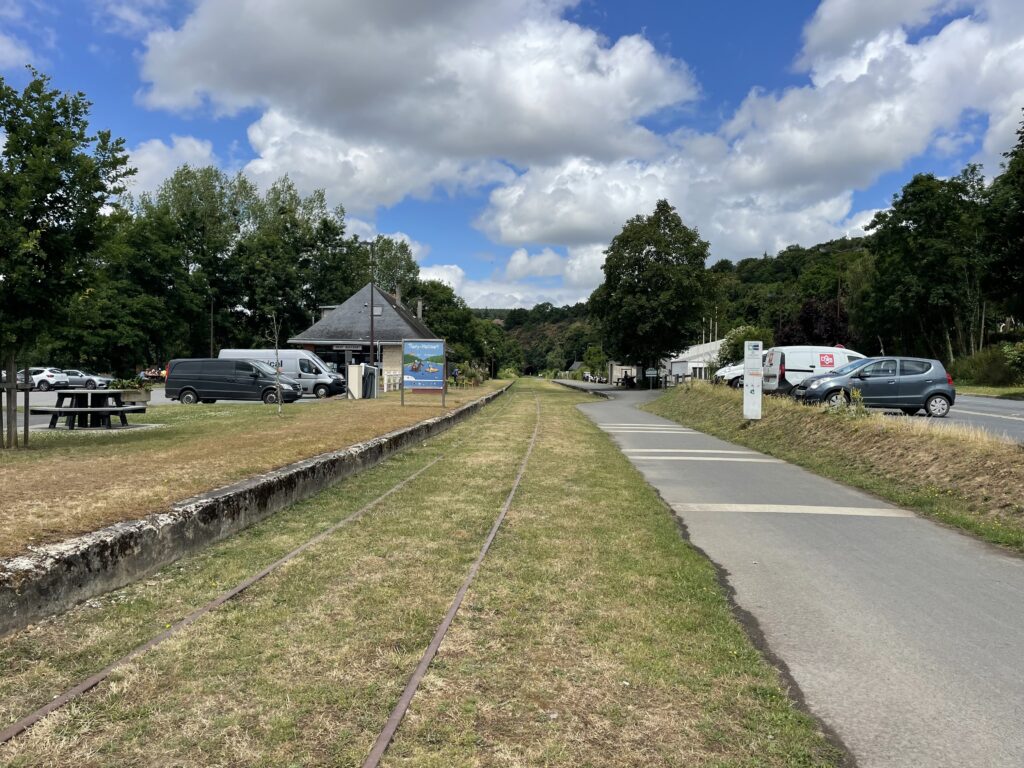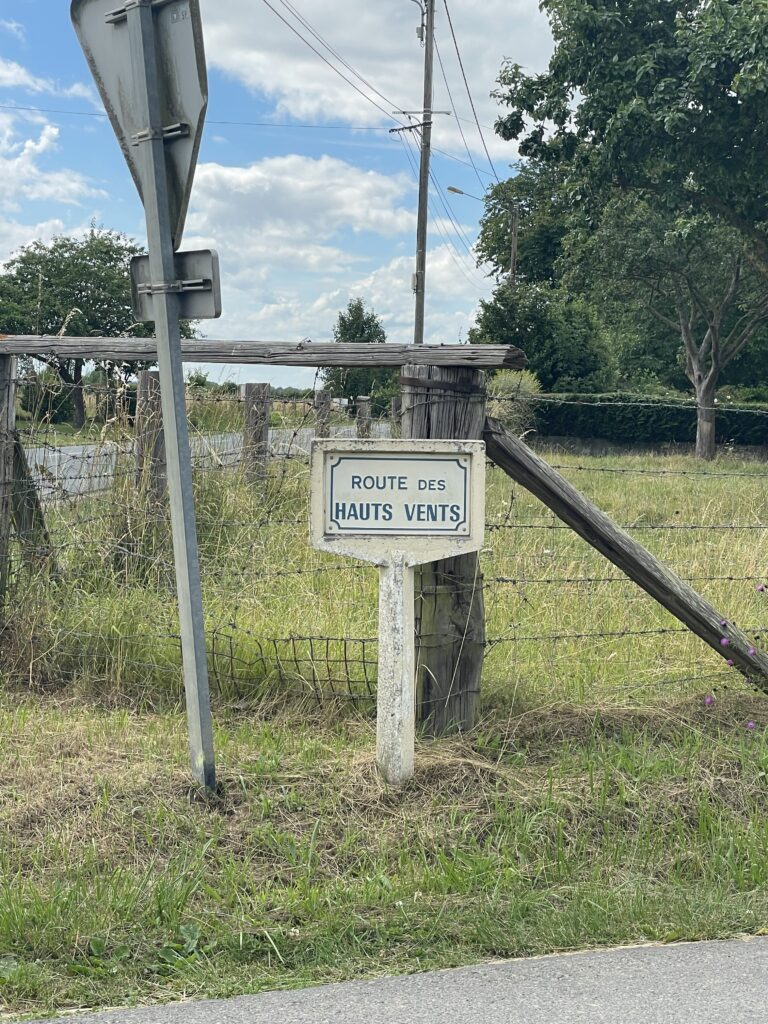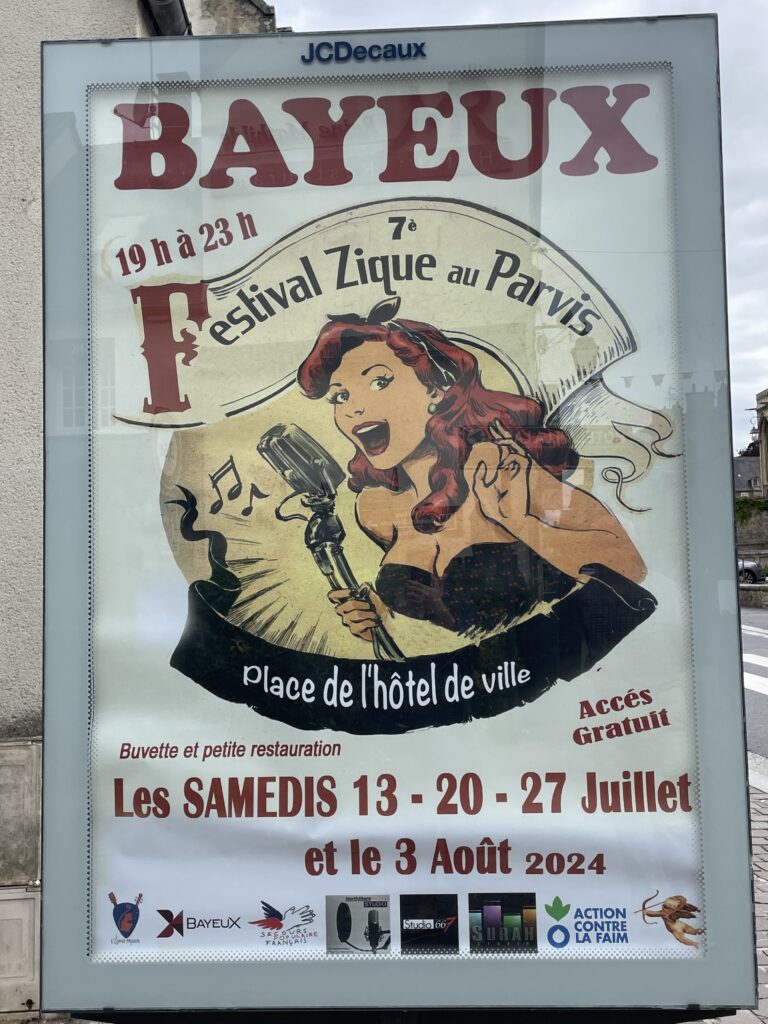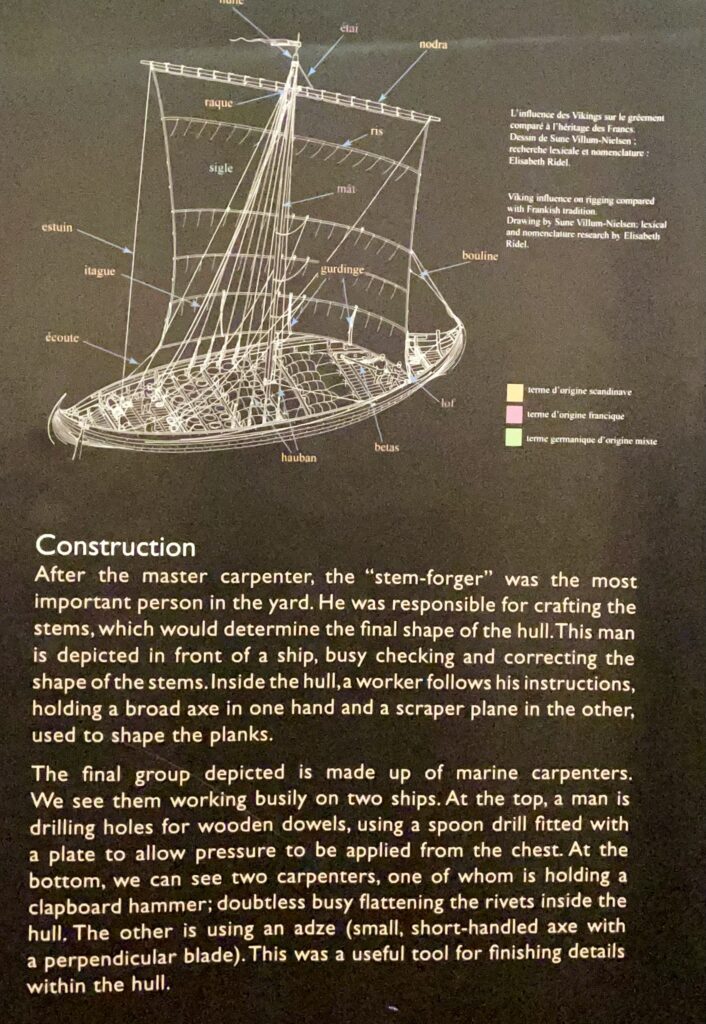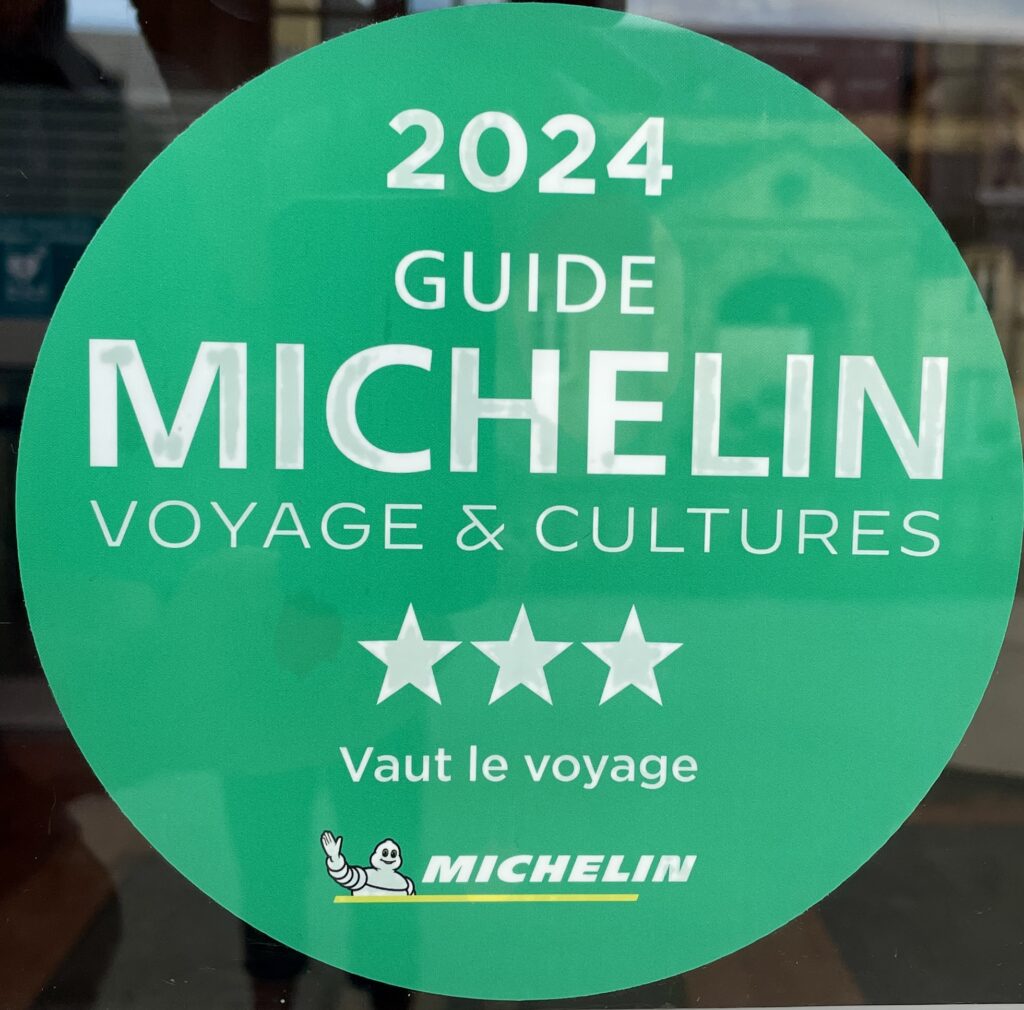In which Sid and Doris go to see the Norman invasion of Britain, a pleasant change from the more recent history recorded around here.
In the morning we greet the cows and ride through the unnecessary hills of the Suisse-Normande to Thury-Harcourt. More Suisse than Normande, says Sid.
At lunch we find some of the cows have died a worthwhile death as we eat at a traiteur which has its own little restaurant. The burger Normande comes with Camembert, apple, mushrooms and actual chopped beef. With frites maison which are crisp and non-wilting.
Thury-Harcourt has its history board which recounts how the town was 80% destroyed by bombs and shells between the 6th and 30th of June 1944, to prevent German reinforcements moving to the coast, with 37 citizens dead. The town was then fought through in August with more destruction and hundreds of combatant deaths. The rebuilding took from 1947 to 1962. All of this is explained as having been entirely necessary for the greater goal of the Continent’s liberation. (Nobody mentions the East Germans, Poles, Ukrainians, Lithuanians, Latvians, Estonians, Hungarians, Czechs, Slovaks, Romanians, Bulgarians.)
The afternoon starts with the old rail line from Thury-Harcourt to Caen along the river Orne.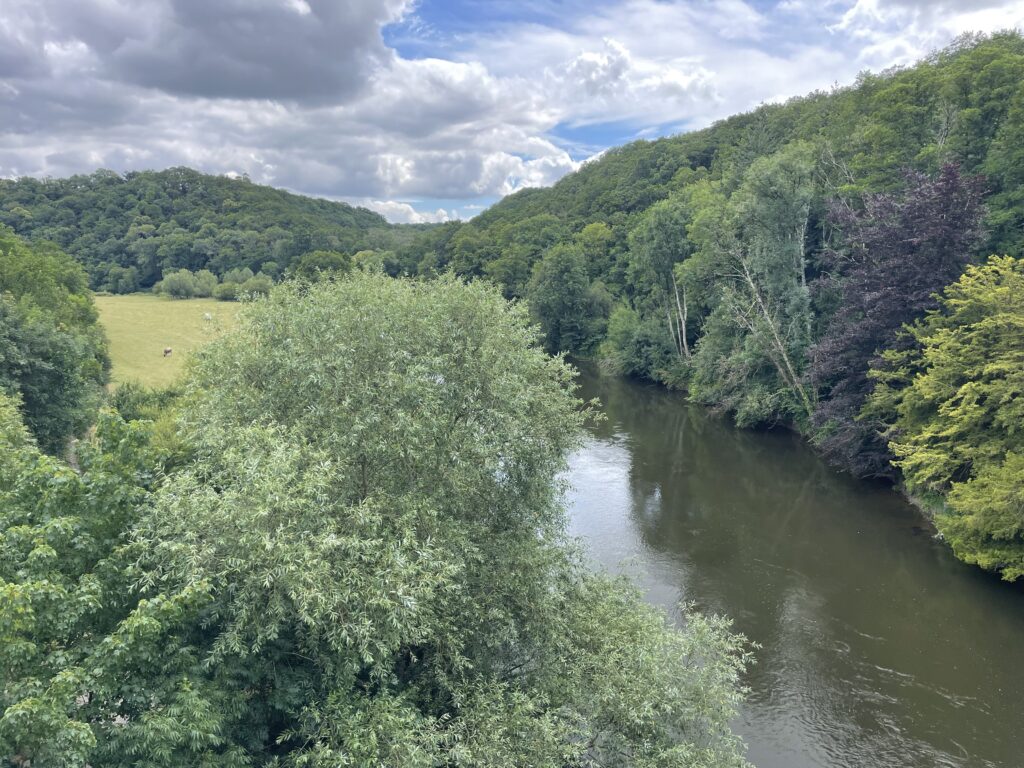
The rail engineering leaves the Normande and knocks out the Suisse with bridges and tunnels. One set of lines has been left. Maybe future scope for a hobby railway?
As the destination is Bayeux and not Caen S and D are off into the hills again, to the delight of Miftah Bat who enjoys all manner of winds.
Other bad signs are water towers and microwave repeater towers.
Bayeux is a charming town with much bunting, thronged cafe tables out in the street and general air of having a good time.
The ‘tapestry’ is an embroidered telling of the story of how William, Duke of Normandy, became King of England in 1066. It was probably commissioned by his half brother Odo to decorate his new cathedral at Bayeux. It is 70 metres long, in nine panels with 58 scenes. The story starts in England where the King’s successor is being settled. William is the choice of Edward the Confessor. On Edward’s death his son in law Harold has himself crowned.
William comes to take it off him in a fleet of longships with an army that incudes armoured cavalry. (We will see specialist craft for landing armies on beaches at the Utah Beach Museum.)
They land. Secure the landing ground, build a fort, get over the sea sickness, start stealing food and transport and set out for Battle. The audio guide keeps you moving along the panels. The museum entrance is set up to contain a big queue. Go early.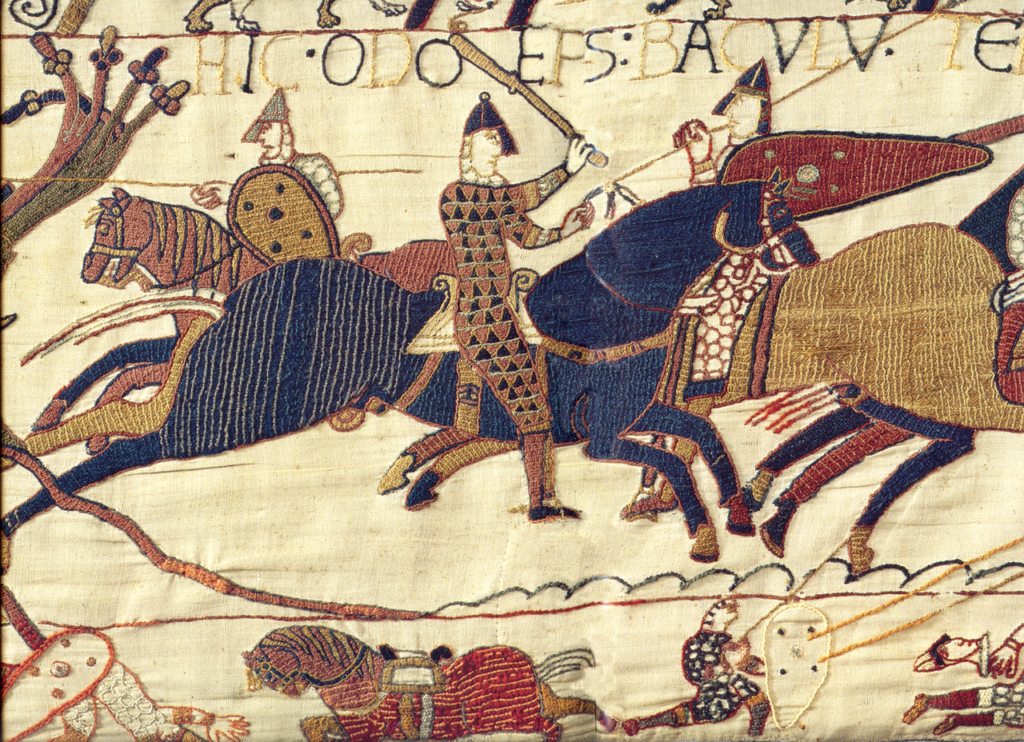
Here is Odo rallying the troops. As a bishop he carries a mace because as a cleric he is not allowed to draw blood with a sword, but smashing heads in is OK.
In 1941 the tapestry was examined by Germany’s Institute of Cultural Heritage in a regional museum at Sourches, in the Sarthe. When the Allies landed the Germans sent it to the Louvre where it survived and was displayed in late 1944.
The tour continues with a look at the historical context and the techniques of the artists, probably English at Canterbury though learned opinion differs.
Lovely town. Do go. Stay at the Lion D’Or and see the show.
Vaut le voyage, even if like Sid and Doris you have come a long way round.
